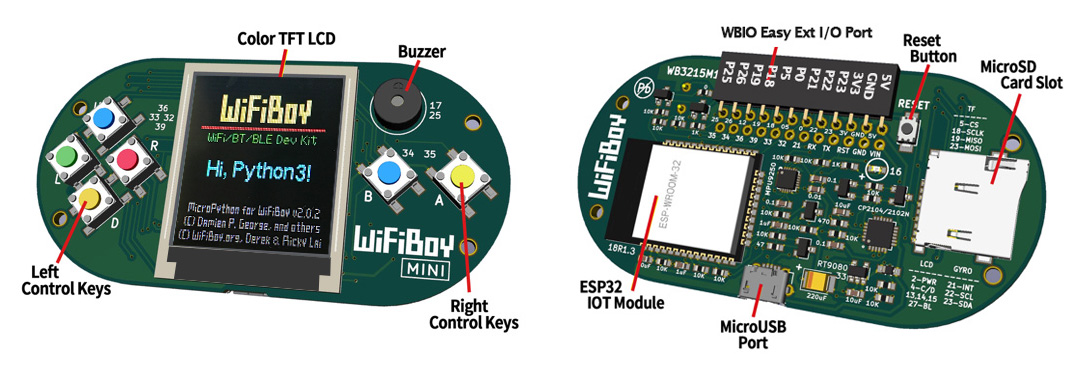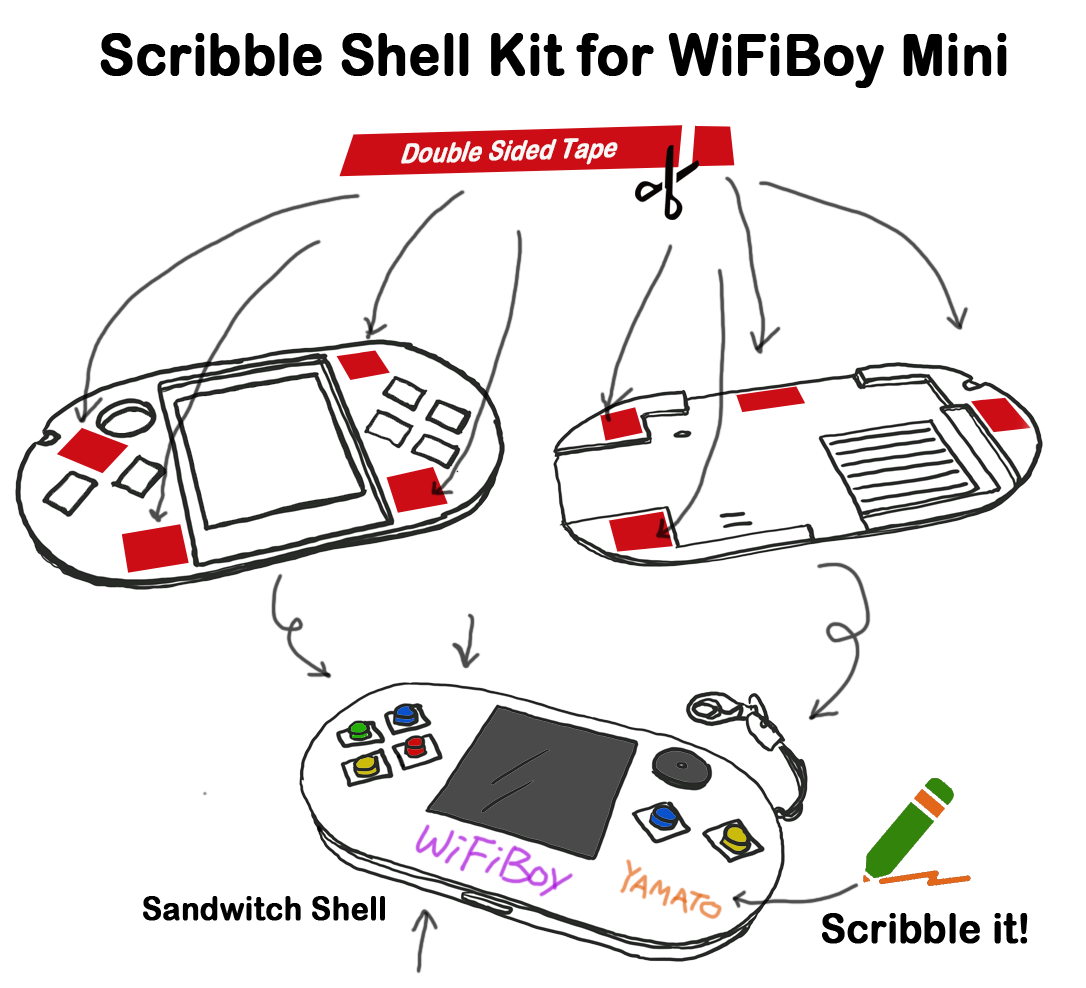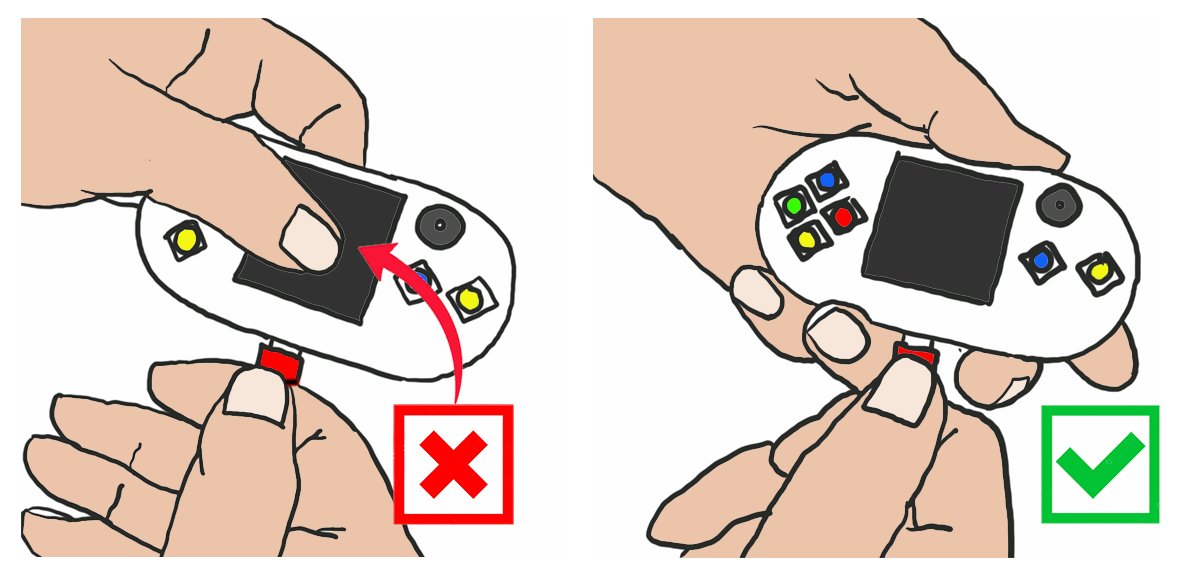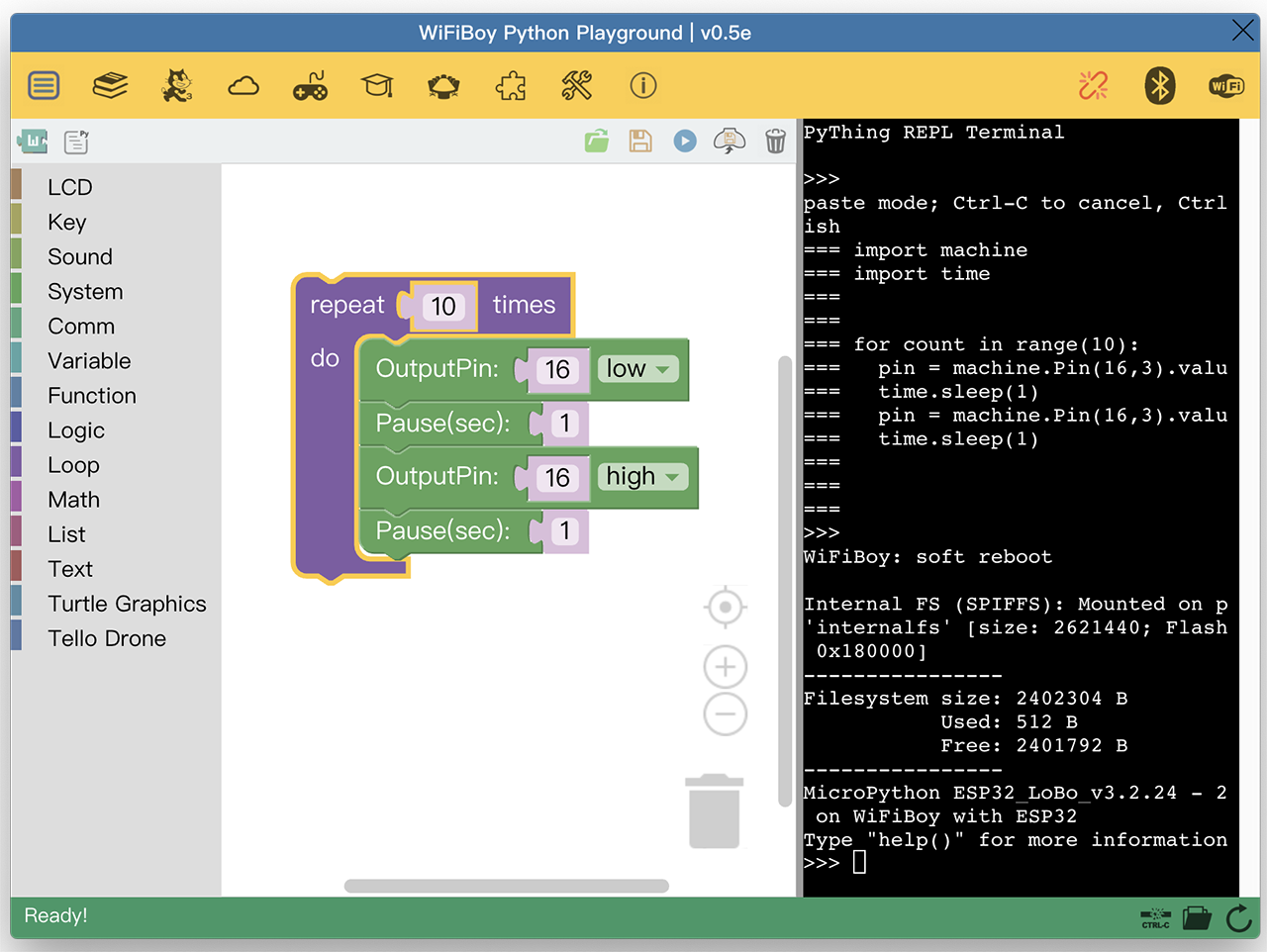A Quick Start Guide for WiFiBoy Mini

Step 1. Put Scribble Shell on your WiFiBoy Mini
1. Check your kit for two shell housing components.
Cut some small double sided tape to the proper place of shells.
Sandwitch your WiFiBoy Mini with top and bottom shells.
(Note: Shells are made by 3D SLA printing, please avoid hot source.)

Step 2. Plug WiFiBoy Mini Kit into your PC
1. Connect WiFiBoy Mini to your computer with a MicroUSB cable.
We suggest to use WiFiBoy official MicroUSB cable for best connection.
(Note: Some Charge-only MicroUSB cables don't have data transfer capability.)
2. Note: Please DO NOT press LCD while you plug/unplug MicroUSB cable.
(The TFT LCD is a fragile glass. Be careful!)

Step 3. Install USB Serial driver
1. Download and install CP210x USB to UART Bridge VCP Driver.
Please identify which platform version to be fit for your computer OS.
Windows 10, Windows 7/8, Windows XP, macOS, Linux have different drivers.
Note: There are both 32-bit and 64-bit versions in the driver pack. Pick the right one to install.
Step 4. Choose a Development IDE
WiFiBoy Mini supports two major development IDE:
1. MicroPython: Download WiFiBoy Python Playground Blockly/Python Development IDE
2. Arduino IDE: Install Arduino for ESP32 Support: Windows, Mac, Ubuntu Linux
Note: MicroPython core was factory pre-installed in your WiFiBoy Mini.
We suggest you to try WiFiBoy Python Playground first.
You can check Python fun stuff later in Tutorials and Examples pages.

Step 5. Check "Blink" LED control example
Use eather MicroPython or Arduino examples to blink WiFiBoy Mini's blue LED.
1. MicroPython: Using "WiFiBoy Python Playground" IDE
Directly execute "ptp.exe"(win) or "ptp.app"(macOS). No installation required.
Click up-right USB icon and pick correct COM Port to connect.
Click "REPL Terminal" black area and press Enter, you'll see ">>>" prompts.
Type "machine.Pin(16,2).value(0)" to light on a blue LED in the back side of WiFiBoy Mini.
Or you can download Blink blockly demo and execute by clicking RUN button.
2. Arduino IDE: Arduino ESP32 supported IDE
Download Arduino Blink example
Make sure you have proper installation for Arduino ESP32 Support Dev Env.
Choose gerneric "ESP32 Dev Module" as your dev board.
Pick the correct Serial port for WiFiBoy Mini. (if not, check CP210x driver.)
Compile and Upload Blink example to WiFiBoy Mini. (baud rate: 921600)
And you should see a blue LED blinking on the back side of WiFiBoy Mini.
Step 6. Congratulations!
If you successfully blink the LED, you can start to play WiFiBoy Mini now!
WiFiBoy Mini is good for IoT maker projects and fun game develeopment.
Please check our Tutorials and Examples page for more fun!
We suggest you to join our dev forum/community: WiFiBoy.Club.
You can share your projects, discuss development ideas and even ask for helps there.
Thank you for your support to WiFiBoy.org.
Enjoy your WiFiBoy Mini!

